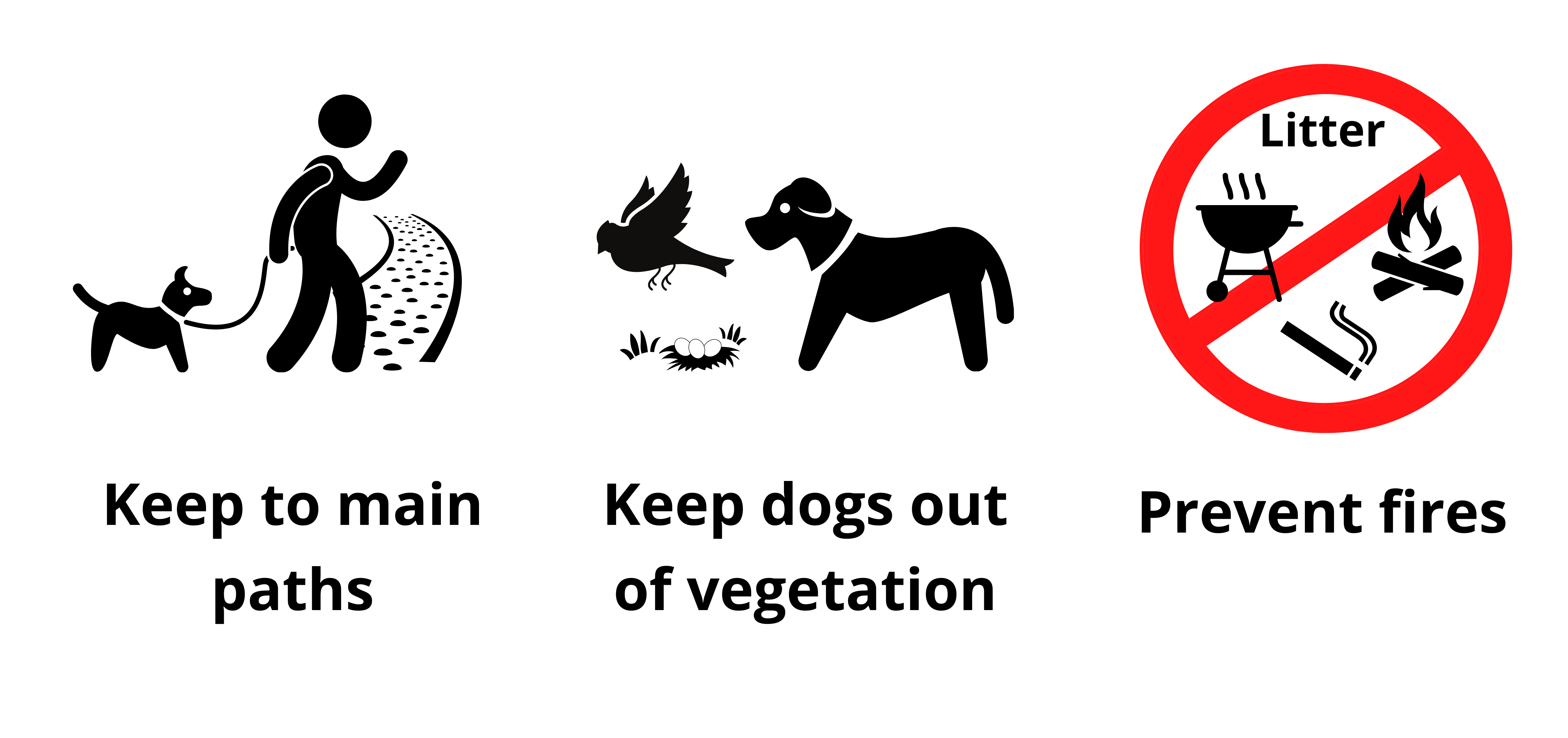Breeding bird results for 2022

The Thames Basin Heaths Special Protection Area (SPA) was created to protect three species of threatened heathland birds, the Nightjar, Woodlark and Dartford Warbler. The numbers are monitored by a team of experienced volunteers coordinated by 2Js Ecology and we’re pleased to bring you the 2022 results. As you’ll remember, the weather was largely dry in early spring and exceptionally hot towards the end of the season. Unfortunately this brought extremely high fire risk and there were heathland wildfires on several sites. Despite the fires, all three species are doing well when compared to the baseline counts recorded in the late 1990s, prior to the establishment of the SPA. We’re incredibly grateful to the volunteers for their invaluable input and to visitors for continuing to keep #PawsOnPathsPlease and for helping to prevent fires.
Nightjar numbers were a little down on 2021, which was the highest on record. The number of territories fell from 413 to 370. It’s thought that a major heathland fire at Ash Ranges is largely responsible for this reduction. Although this total is only 1.8% below the mean for 2017-21, it may in truth be lower, as the result doesn’t reflect the large heathland fire at Pirbright Ranges in July, that happened after the survey season.
Woodlark numbers were similar to 2021, with small gains and losses across the area. It’ll be interesting to record how quickly Woodlarks and Nightjars are able to recolonise burnt areas, as Woodlarks in particular are opportunistic and will quickly move back to areas regenerating after fire.
Dartford Warblers had the best result, with numbers increasing across most sites, and the total number of territories was up from 553 to 702. This is largely attributed to the extremely mild 2021/22 winter, with no prolonged periods of zero temperatures or days with lying snow. A word of caution though, the fires at Ash Ranges, Pirbright Ranges and other sites have destroyed habitat and will likely result in a large reduction in Dartford Warbler numbers in 2023.
The table below compares the 2022 totals with recent years, as well as the year of the relevant baseline survey.
| Bird species | No. of pairs at SPA notification (year) | No. of pairs in 2020 | No. of pairs in 2021 | No. of pairs in 2022 |
|---|---|---|---|---|
| Nightjar | 264 (1998-99) | 404 | 413 | 370 |
| Dartford Warbler | 445 (1999) | 716 | 553 | 702 |
| Woodlark | 149 (1997) | 167 | 196 | 192 |
What’s next?
Nature is complex, but factors that will help get us back on an upward trend include…
- Everyone continuing to help by keeping to main paths and keeping dogs out of vegetation, especially March to September
- Everyone continuing to help by preventing heathland fires
- Everyone continuing to help by discovering and using the places listed in ‘Greenspace on your doorstep’
- Everyone continuing to help by spreading the word
- Good weather, especially another mild winter
- Continued brilliant work by land managers, keeping the habitats in tip top condition
What does it mean for you?
The Special Protection Area was setup to protect these rare breeding birds, but it does so much more than that. It protects the heathland habitat for all sorts of wonderful wildlife, and of course gives the landscape we love a huge amount of protection from inappropriate development.
#PawsOnPathsPlease

